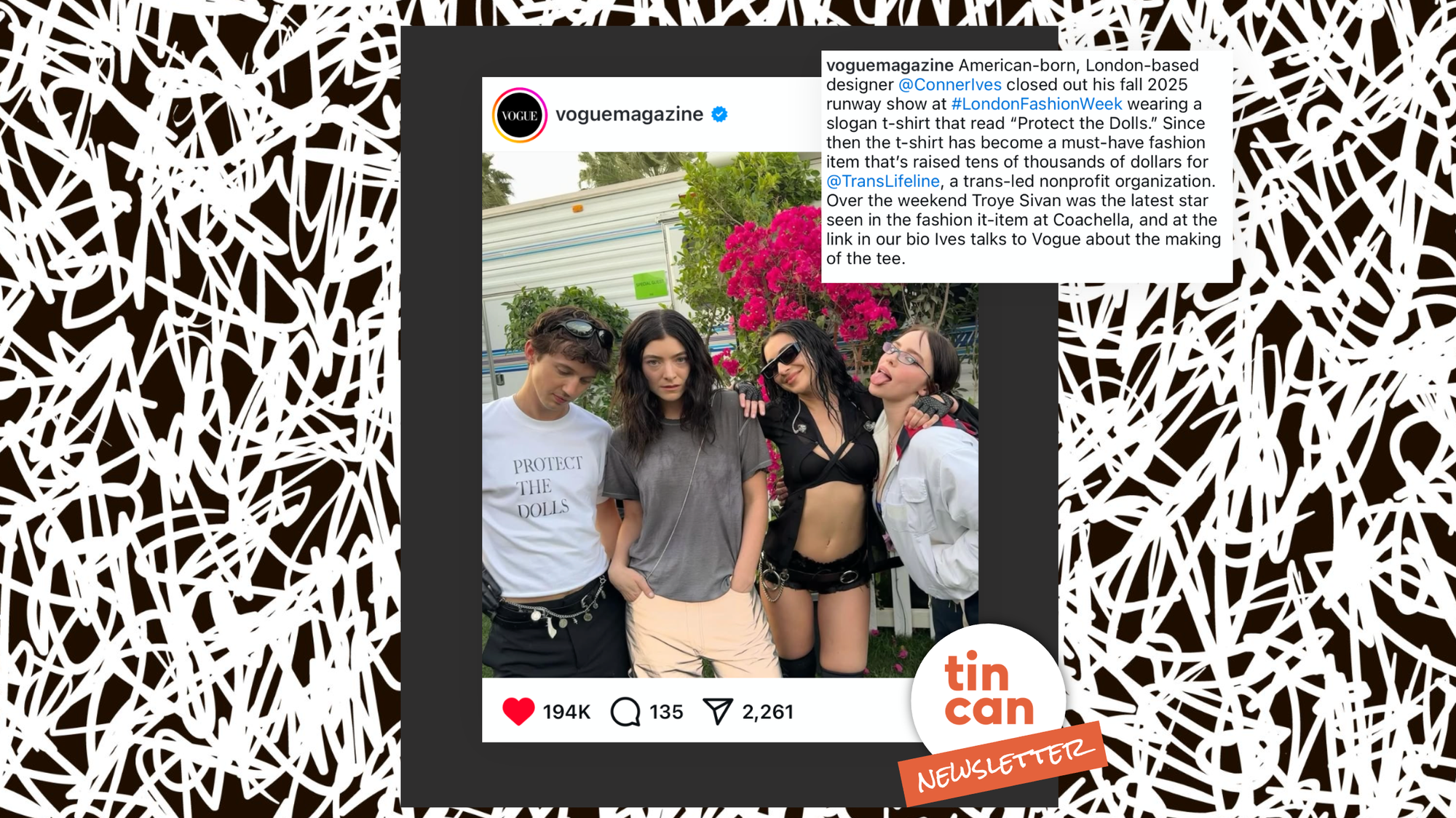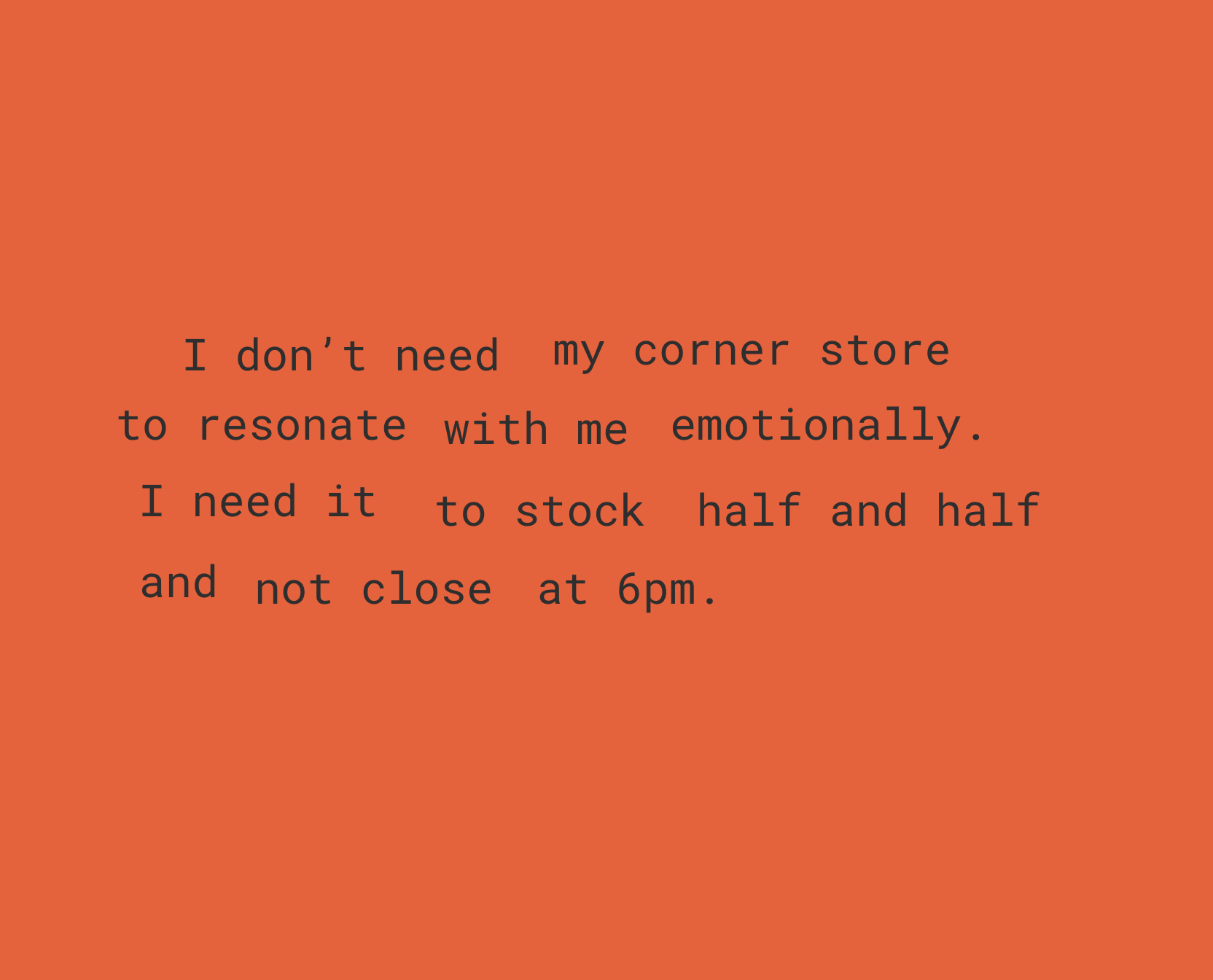Brand vs. Business: Why the Distinction Matters
You Don’t Need a Brand…Until You Do

Welcome to Tincan, a newsletter about marketing, culture, and how small brands make a big impact. Subscribe here.

The word “brand” is deeply cursed. It’s overused and meaningless. It gives tech-bro energy. Or manufactured authenticity. Someone who loves branding would probably say, “let’s circle back to our guiding ethos.” An eyeroll.
And yet. The word also shouldn’t only ever give you the ick. Because when done right, branding is genuinely useful. And important.
This all came to mind after I read Anne Helen Petersen’s piece about millennial hobby energy, where she talks about our very real tendency to turn literally anything into a brand. You might start by growing a few beautiful flowers in your backyard because you love gardening, but next thing you know, you’ve installed a greenhouse, bought a stack of horticulture books, started propagating cultivars, built a website, figured out national shipping logistics, and launched a full-blown flower empire. (I fully do this.)
It’s overwhelming how much we’ve monetized and brandwashed everything. It also makes me feel incredibly conflicted about my line of work. Us marketing people are out here branding things to death! We are the problem!! Everything is glossy and slick. Coated in capital. Designed to scale. Depressing!
But despite all of that, branding does exist for a reason. Unique positioning, good messaging, and clear, cohesive design are the key ingredients of a good brand. They help people understand what you offer, why it matters, and why they might want to stick around. If none of those things are important to what you do, then great! You don’t need a brand at all. You’re actually just a business. You operate, you earn, you serve your people. I don’t need my corner store to resonate with me emotionally. I need it to stock half and half and not close at 6 p.m.

But if people don’t already need what you offer—if you’re trying to carve out space, create demand, or grow into something new—then branding is the tool that can help you get there. A good brand builds rapport. Creates buzz. Inspires devotion. Fosters community. Motivates your team. Earns referrals. Gets awards! And yes: makes money. Money…yuck.
The connection between a good brand and more money is very real. Recognizing the link between those two semi-evils helps bring intention back into your marketing. Because brands that have gorgeous design for no reason feel hollow. They’re part of what gives marketing a bad name. They make the rest of us feel like we should be doing more—have the perfect website, the perfect logo, the perfect feed. So we rush to check those boxes, often without doing the [genuinely very difficult] work of figuring out what any of this is for, or who we’re even talking to, or why we’ve launched this endeavor in the first place (again, money). It’s one thing to look good online. It’s a much bigger deal to make something people actually feel aligned with. Something they want to support, share, or be a part of.
And to be very clear: there is zero shame in skipping the whole brand thing. If you don’t need deep connection or super expansive growth, you don’t need to build a brand. You can just be a business. A solid, respectable, functioning business. (You are, however, still very not allowed to have heinous, awful, unusable design. That’s not branding, that’s manners.)
But if you’re looking for something bigger—if you want people to care, to keep coming back, to tell their friends—then what you’re looking for is a brand. And if you’re going to build a brand, build it the right way. Lay the foundation for authentic, meaningful connection. Align your messaging, visuals, and presence around something real. Make it conceptually strong first.
And voilà! A brand!
Everything else should fall into place momentarily. (Sort of. Lol.)


Are you a brand? Or a business?
A quick (possibly upsetting) questionnaire.
You’re a business if…
- There’s no competition. You are the best.
- There’s no need to tell people who you are and what you do. They already get it.
- Your visual identity is truly original (from 1977).
- Your website is still coded in HTML and somehow still works.
- Your social media has 3 posts. Two of them are from 2019.
- You’re not looking for input. You’re looking for peace.
- You’re still rocking the same staff t-shirt from ten years ago. (And you should be! That’s a quality garment right there. They don’t make them like that anymore.)
- Your goal is Efficiency. Efficiency. Efficiency.
- You think that marketing is unnecessary.
You’re a hollow shell of a brand if…
- There’s an identical business to yours in Alabama, Alaska, Arizona, Arkansas, California, Colorado…you get the idea.
- Your messaging feels canned.
- Your visual identity is perfect.
- Your website is an immersive experience that takes six minutes to load.
- Your social media is actually certifiably perfect. Suspiciously so.
- People are split between being really into you and feeling deeply skeptical of your whole deal.
- You have so much branded merch you’re basically paying people to take it.
- Your goal is to be seen as “bespoke,” “slick,” or “elevated.”
- You think of marketing as art. Or vibes.
You’re actually a brand if…
- You’re unique and people remember you.
- People are very clear on what you do, who it’s for, and why it matters.
- Your branding is distinct and intriguing.
- Your website looks good and works well—but it’s still a work in progress (like the rest of us).
- Your social media presence feels like a person, not a press release.
- People want to be around you. Even in the comments and DMs.
- People get genuinely excited when you drop new merch. Or a newsletter. Or a tidbit.
- Your goal is to build long-term relationships, not just short-term hype. And yes, you’re also interested in making money.
- You think of marketing as one of many tools that keep the business running—like customer service, operations, or sleep.

Scraps
- The @nytstyle account felt the need to acknowledge the significance of Bernie Sanders’ speech at Coachella…but instead chose to focus on his outfit:
“Senator Bernie Sanders of Vermont took the stage to introduce the singer Clairo in his typical ensemble of blazer and button-down shirt. While usual for him, the look was atypical for the festival and one that, like the others on this list, will be hard to forget.” (post)
It made me laugh. But it’s also a reminder: you don’t have to stay in your lane online. Yes, you might cover fashion, but when a major political figure shows up at an event that you’re covering and says something meaningful, please don’t only comment on the fit. Your brand can hold more than one thing at a time. (I also pretty much never want to hear about a politician’s clothes. They are not cute!!) - Also spotted: Downtime Bakery’s sweatshirt making a cameo on a WHYY post! We talked about the pros and cons of merch in a recent issue, but this is proof that when your brand identity is strong (and your merch is something people actually want to wear) you’ve unlocked the rare and beautiful achievement of having your community spread the word for you.

